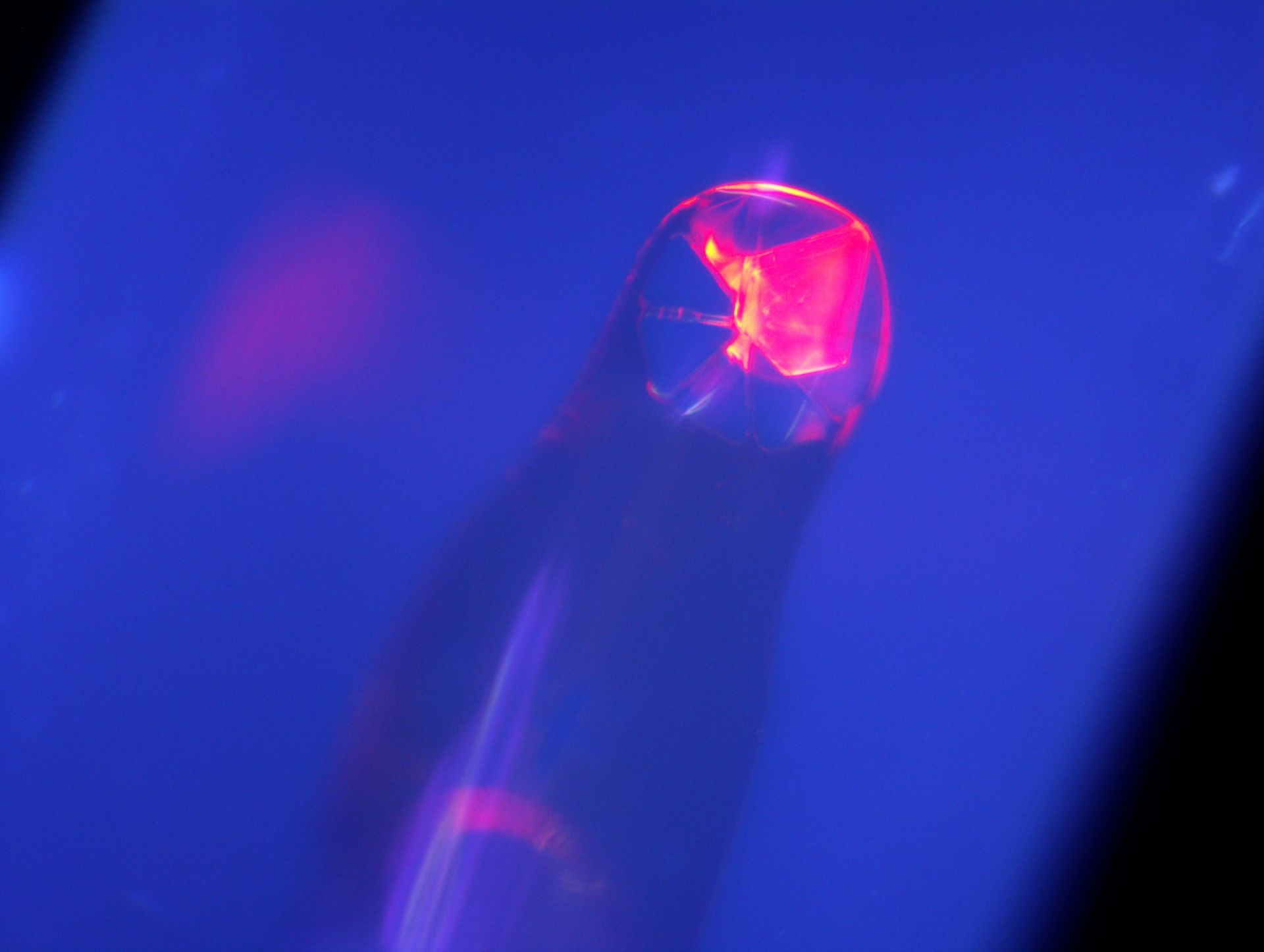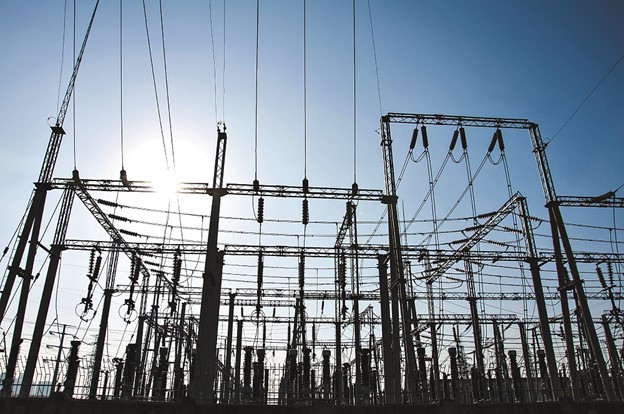Sesuvium portulacastrum (Photo: David Eickhoff/Wikicommoms)
The authors of a study that was recently published in Advances in Agriculture have recommended that the plant Sesuvium portulacastrum, commonly known as sea purslane, “be cultivated in [cesium]-contaminated soils and near nuclear power plants for phytoremediation.” The researchers found that S. portulacastrum is a “hyper-accumulator” of radioactive cesium isotopes, which are byproducts of nuclear fission reactions in nuclear reactors. The study results suggested that these plants could efficiently remove the toxic metallic chemicals from contaminated soil around nuclear facilities.
Bruce's Unit 7 is now producing Lutetium-177, used in targeted cancer therapeutics. (Photo: Bruce Power)
An international collaboration between Bruce Power, Isogen (a Kinectrics and Framatome company), and ITM Isotope Technologies Munich SE (ITM) announced they have begun commercial production of lutetium-177 using Unit 7 of the Bruce nuclear power plant in Kincardine, Ontario. According to the companies, this marks the first time a commercial power reactor has been used to commercially produce short-lived medical radioisotopes.
Conceptual layout and deployment of a Prodigy SMR Marine Power Station with 12 NuScale Power Modules. (Graphic: Business Wire)
NuScale Power and Prodigy Clean Energy announced on October 26 that they have developed a conceptual design for a transportable, marine-based small modular reactor. The companies plan to present the design to utilities, regulators, and shipyard manufacturers. Prodigy, a Canadian company “specializing in the development of transportable nuclear power plants,” and NuScale signed a memorandum of understanding in 2018 agreeing to pursue the development of an SMR marine facility.
INL’s Materials and Fuels Complex. (Photo: INL)
The Department of Energy announced $150 million in Inflation Reduction Act funding on October 25 for infrastructure improvements at Idaho National Laboratory. According to the DOE, the funding will support nearly a dozen projects at INL’s Advanced Test Reactor (ATR) and Materials Fuels Complex (MFC), both of which have operated for more than 50 years. The investments in existing infrastructure assets mean support for nuclear energy research and development, including fuel testing, bolstering the near-term supply of high-assay low-enriched uranium (HALEU), and reactor demonstrations.
A rendering of the GA fusion pilot plant. (Image: GA)
General Atomics (GA) announced on October 20 that it has developed a steady-state, compact advanced tokamak fusion pilot plant concept “where the fusion plasma is maintained for long periods of time to maximize efficiency, reduce maintenance costs, and increase the lifetime of the facility.”
Kris Singh (left), president and CEO of Holtec International, and Young-Joon Yoon, president and CEO of Hyundai E&C. (Photo: Holtec International)
Holtec International and Hyundai Engineering & Construction (a Hyundai Motor Group subsidiary) have signed an accord to accelerate the completion of Holtec’s SMR-160 small modular reactor development program, as well as to collaborate on diverse clean energy technologies.
The Integrated Effects Test at TerraPower’s laboratory in Everett, Wash. (Photo: Southern Company/TerraPower)
“The world's largest chloride salt system developed by the nuclear sector” is now ready for operation in TerraPower’s Everett, Wash., laboratories. Southern Company, which is working with TerraPower through its subsidiary Southern Company Services to develop molten chloride reactor technology, announced on October 18 that the Integrated Effects Test (IET) was complete. The multiloop, nonnuclear test infrastructure follows years of separate effects testing using isolated test loops, and it was built to support the operation of the Molten Chloride Reactor Experiment (MCRE) at Idaho National Laboratory that the companies expect will, in turn, support a demonstration-scale Molten Chloride Fast Reactor (MCFR).
An aerial view of ORNL’s main campus. (Photo: ORNL)
The Gateway for Accelerated Innovation in Nuclear (GAIN) announced the three recipients of its fourth and final round of 2022 vouchers on October 10. The vouchers were awarded to Curio Solutions, which is developing a spent fuel recycling process, and to two companies that are separately investigating advanced reactor siting—Elementl Power and the Tennessee Valley Authority (TVA). The funds for each award will go directly to Oak Ridge National Laboratory.
The Spherical Tokamak for Energy Production, shown here in an artist's rendition, is a government-backed prototype fusion energy plant planned for operation in the U.K. in the early 2040s. (Image: UKAEA)
The U.K. Atomic Energy Authority (UKAEA) and Tokamak Energy announced on October 10 that they signed a framework agreement to collaborate on developing spherical tokamaks for power production. This news is a complement to last week’s announcement from the U.K. government that the West Burton A coal-fired power plant site in Nottinghamshire has been selected as the future home of STEP (Spherical Tokamak for Energy Production), the U.K.’s planned prototype fusion energy plant. The government is providing £220 million (about $250 million) of funding for the first phase of STEP, which will see the UKAEA produce a concept design by 2024.
An artist’s rendering of Hermes. (Image: Kairos Power)
The Nuclear Regulatory Commission issued a draft environmental impact statement (EIS) recently on Kairos Power’s application for a permit to construct Hermes, a 35-MW nonpower version of the company’s fluoride salt–cooled reactor design (KP-FHR), at the East Tennessee Technology Park in Oak Ridge, Tenn.
(Image: Ana Kova /USFusionEnergy.org)
The Department of Energy announced up to $50 million for a new milestone-based fusion energy development program on September 22. The funding opportunity announcement is open to for-profit companies—possibly teamed with national laboratories, universities, and others—that are prepared to meet major technical and commercialization milestones leading to a pilot fusion power plant design.
A new compound of curium photographed at LLNL during crystallography experiments. Crystals of this curium compound are uncolored under ambient light but glow an intense pink-red when exposed to ultraviolet light. (Image: LLNL/Deblonde)
Scientists at Lawrence Livermore National Laboratory and Oregon State University (OSU) have developed a promising new method to isolate and study some of the rarest elements on Earth. Focused first on curium, they have identified three new complexes containing curium ions and revealed the molecules’ 3D structures, as well as previously unknown features.
The Continuous Electron Beam Accelerator Facility at Jefferson Lab. (Source: Jefferson Lab)
Research with the Department of Energy’s Thomas Jefferson National Accelerator Facility (Jefferson Lab) has revealed new insights into short-range correlations—the brief pairings of nucleons (protons with neutrons, protons with protons, or neutrons with neutrons) in the nuclei of atoms. The study, published in Nature, used precision measurements to determine that short-range correlations differ depending on the density of the nucleus, that is, how many nucleons it contains.



.jpg)
















